Defending Frequently Challenged Young Adult Books
Published by Rowman & Littlefield
A wholly owned subsidiary of The Rowman & Littlefield Publishing Group, Inc.
4501 Forbes Boulevard, Suite 200, Lanham, Maryland 20706
www.rowman.com
Unit A, Whitacre Mews, 2634 Stannary Street, London SE11 4AB
Copyright 2016 by Rowman & Littlefield
All rights reserved. No part of this book may be reproduced in any form or by any electronic or mechanical means, including information storage and retrieval systems, without written permission from the publisher, except by a reviewer who may quote passages in a review.
British Library Cataloguing in Publication Information Available
Library of Congress Cataloging-in-Publication Data Available
ISBN 978-1-4422-6431-1 (hardback: alk. paper)
ISBN 978-1-4422-6432-8 (paperback: alk. paper)
ISBN 978-1-4422-6433-5 (electronic)
 The paper used in this publication meets the minimum requirements of American National Standard for Information SciencesPermanence of Paper for Printed Library Materials, ANSI/NISO Z39.48-1992.
The paper used in this publication meets the minimum requirements of American National Standard for Information SciencesPermanence of Paper for Printed Library Materials, ANSI/NISO Z39.48-1992.
Printed in the United States of America
For Sandra Lott, my freshman English professor (19621963), Alabama College (now the University of Montevallo): In deep gratitude, for pointing the way and setting me free.
Preface
There is more than one way to burn a book. And the world is full of people running around with lit matches.Ray Bradbury, Fahrenheit 451
Young adult literature has been the target of censors since S. E. Hinton first presented The Outsiders to teenagers in 1967. It was the gang culture that caused parents and school administrators concern. Then along came Paul Zindel and The Pigman in 1968, and opposition to the novel mounted because the two main characters are liars, cheaters, and stealers. They also curse, something some adults cannot accept in fiction for young adults. The Chocolate War by Robert Cormier came on the scene in 1974, and many adults became absolutely certain that the novel would cause teens to question authority. In 1975, Forever by Judy Blume was an overnight success with young adults, and the voices of censors became louder. This time the issue was a teenage girls first sexual experience. And in 1977, Robert Lipsyte had boys and girls clamoring to read One Fat Summer, while their parents and teachers complained about the masturbation scene.
These writers gave birth to the genre of young adult literature, and teens took notice because suddenly they had books that dealt with adolescent concerns. A new wave of writers like Sherman Alexie, Laurie Halse Anderson, Chris Crutcher, John Green, Bette Greene, Ellen Hopkins, M. E. Kerr, and Walter Dean Myers began to write honest novels that deal with tough topics like drug and alcohol abuse, bullying and violence, date rape, incest, race relations, homosexuality, and mental illness. School and public libraries became a censorship battle zone, and the American Library Associations Office for Intellectual Freedom (OIF) began monitoring censorship cases and defending kids right to read. The Freedom to Read Foundation (FTR), founded in 1969 as the legal defense arm for the American Library Association, has offered expert guidance and in some cases monetary aid to individuals and libraries in active censorship conflicts.
In 1982 Steven Pico, a high school junior, sued the Board of Education, Island Trees Union Free School District No. 26, when they removed nine books from the high school library. After a lengthy road to the Supreme Court, it was decided that school officials cannot remove books from a library simply because they find the ideas objectionable. This remains the precedent case, and OIF, FTR, and other free speech organizations point to it when censorship battles develop. It was the Pico case that led four Olathe, Kansas, high school students to victory in 1995 when they sued the superintendent of schools after he removed Annie on My Mind by Nancy Garden, a book that had been on the library shelf for more than ten years. These important cases have given voice and courage to students throughout the nation to speak up for their right to read. In 2001 a student in Fairfax County, Virginia, spoke eloquently before a group of citizens about The Pillars of the Earth by Ken Follett and caused the superintendent to stand up to PABBIS (Parents against Bad Books in Schools) and retain the novel, along with a long list of other titles. The school district in Tucson, Arizona, shut down the Mexican American Studies program in 2011 and removed a number of books, including Mexican WhiteBoy by Matt de la Pea. An angry student invited de la Pea to speak at a rally, where he distributed copies of his book. When a school board member led the efforts to ban The Miseducation of Cameron Post by emily m. danforth from the ninth-grade summer reading list at Cape Henlopen High School in Delaware, a student wrote a convincing essay, sponsored by the National Coalition against Censorship, that ignited national attention and caused the school board to reconsider its decision. And in 20142015, Highland Park, Texas, students wore orange ribbons to signify their opposition to book banning efforts led by a group of citizens and some school board members.
According to data collected by the American Library Associations OIF, book challenges have actually decreased in libraries in recent years, but they have increased in the classroom. In the decade 20002009, school libraries had 1,639 challenges, classrooms had 1,811 challenges, and public libraries received 1,217 challenges. In 20142015, OIF recorded 311 challenges. Only two were published as young adult titles, but three were adult books commonly used in English classrooms. In 20132014, there were 307 reported challenges. Seven of the top ten were young adult titles. This was down from 20122013, when there were 465 reported challenges. Four of the top ten were young adult titles. Books being sexually explicit is the top complaint, followed by offensive language, unsuited for age group, violence, homosexuality, occult, and religious viewpoints. A complete report of the number of challenges, reasons for challenges, and the top ten most frequently challenged books by year is available at http://www.ala.org/bbooks/frequentlychallengedbooks/top10.
Not all challenges are reported, but a number of free speech organizations track censorship attempts through all types of media, including social media. The titles in this book are taken from the data collected by the American Library Associations OIF, the National Coalition against Censorship, Texas ACLU, National Council of Teachers of English, Comic Book Legal Defense Fund, and Oregon Intellectual Freedom Clearinghouse. A few titles in this book are reported in Hit List for Young Adults 2: Frequently Challenged Books (ALA, 2002) by Teri S. Lesesne and Rosemary Chance. They are included here because they continue to be challenged. Robert P. Doyles Banned Books: Challenging Our Freedom to Read, 2014 Edition (ALA) and its supplements have been an invaluable tool in identifying the books that have been challenged or banned and the reasons why.
The Young Adult Library Services Association (YALSA) serves adolescents ages twelveeighteen. For this reason, many of the challenges in this book have occurred in middle schools that typically serve students in the sixth through eighth grades. Some public libraries stop serving patrons in the childrens room at age eleven. A concern of some parents is that books appropriate for an eighteen-year-old might not be appropriate for a twelve-year-old. While this might be a valid concern, it is not up to the public library to determine age appropriateness. Parents and their teens must make that call.


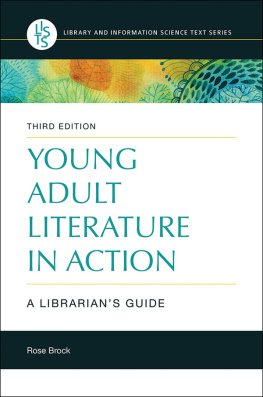
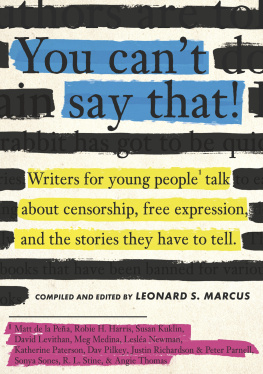

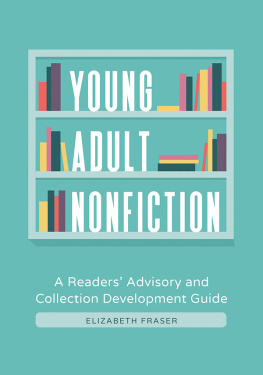
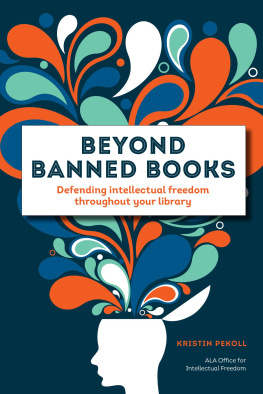
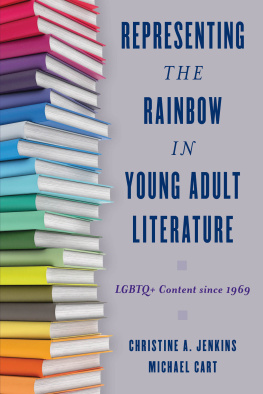
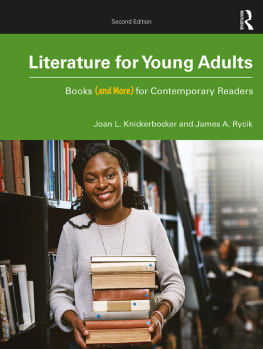

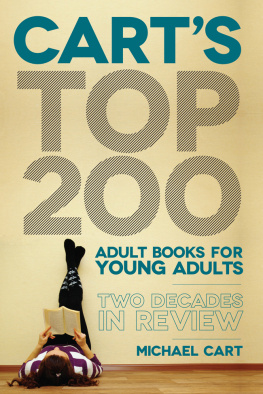
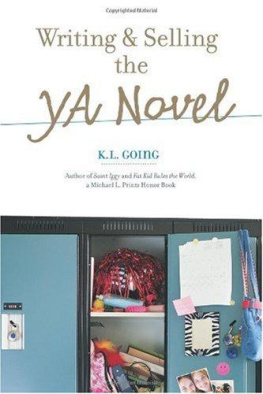

 The paper used in this publication meets the minimum requirements of American National Standard for Information SciencesPermanence of Paper for Printed Library Materials, ANSI/NISO Z39.48-1992.
The paper used in this publication meets the minimum requirements of American National Standard for Information SciencesPermanence of Paper for Printed Library Materials, ANSI/NISO Z39.48-1992.